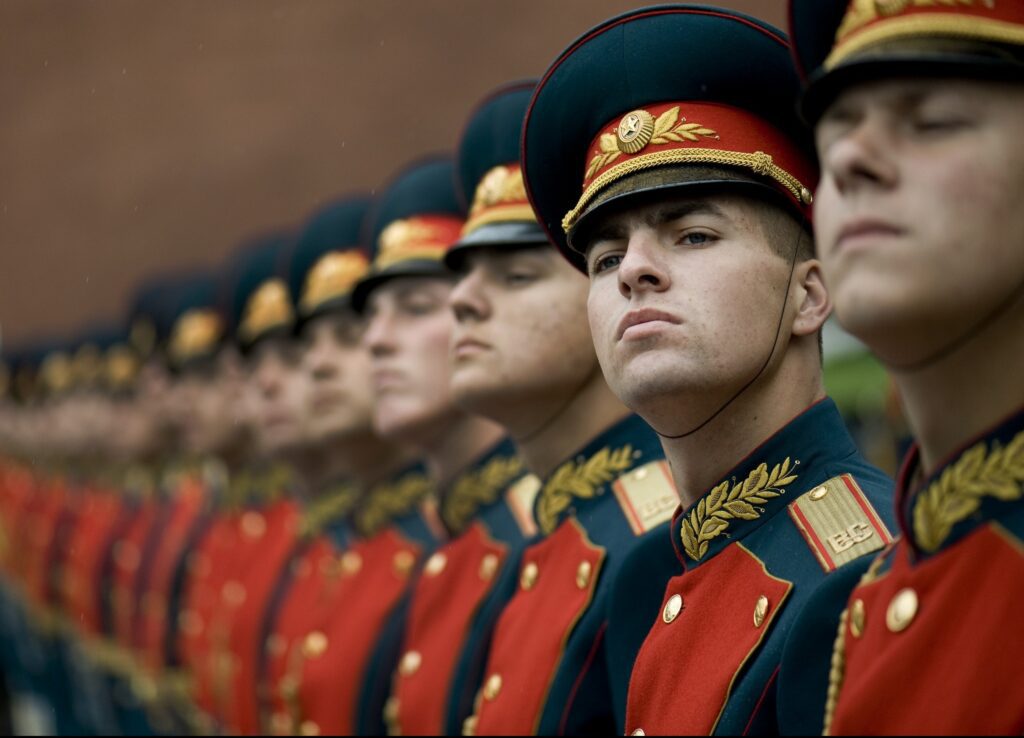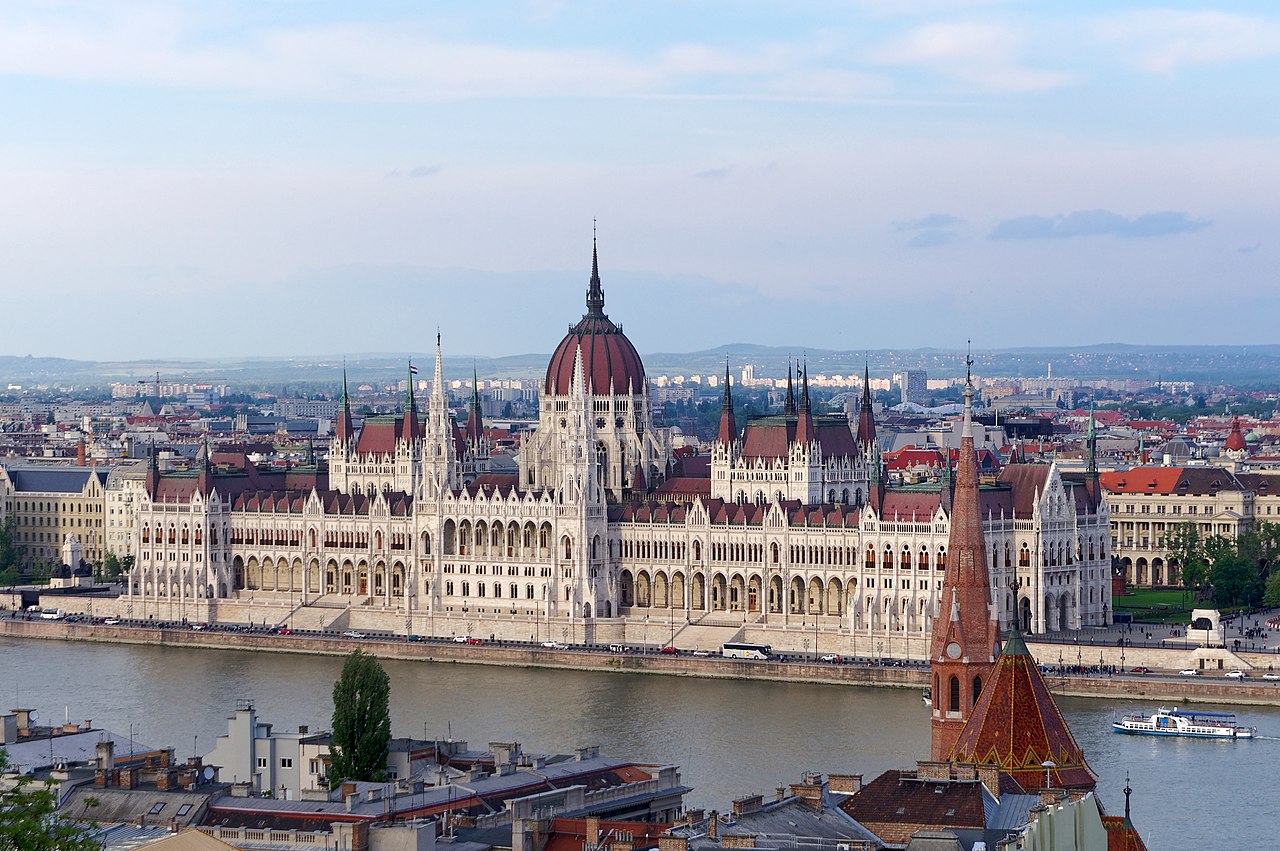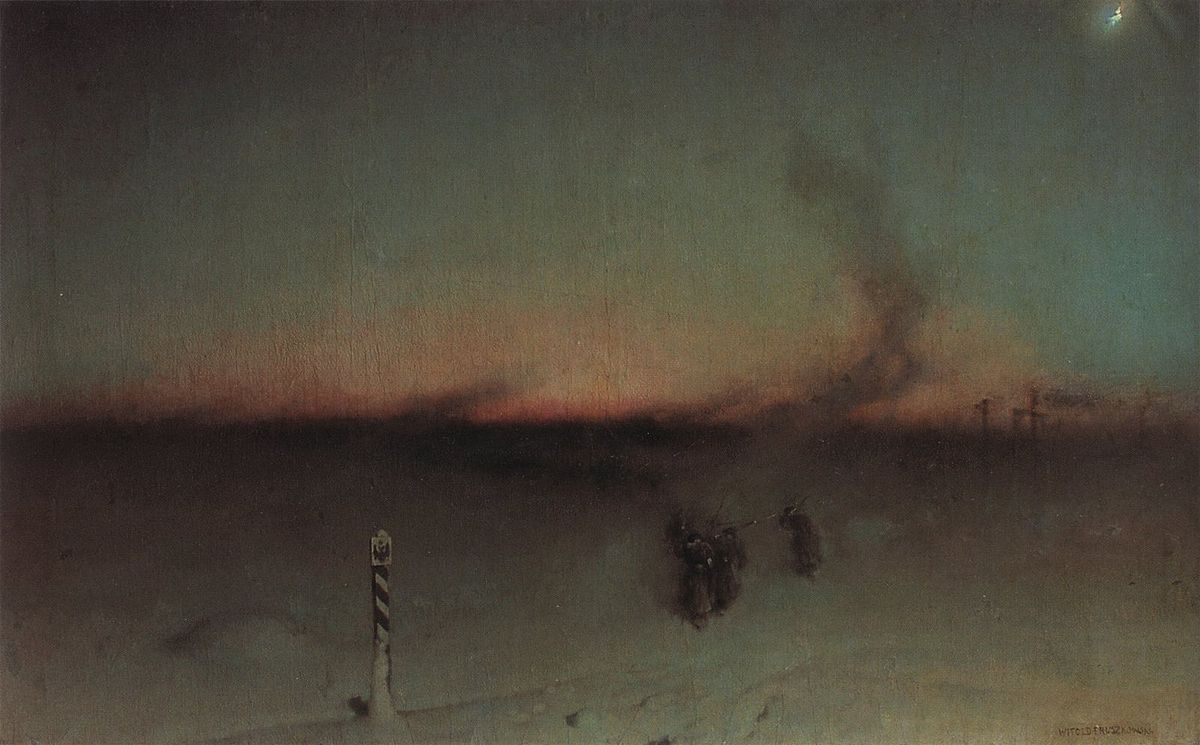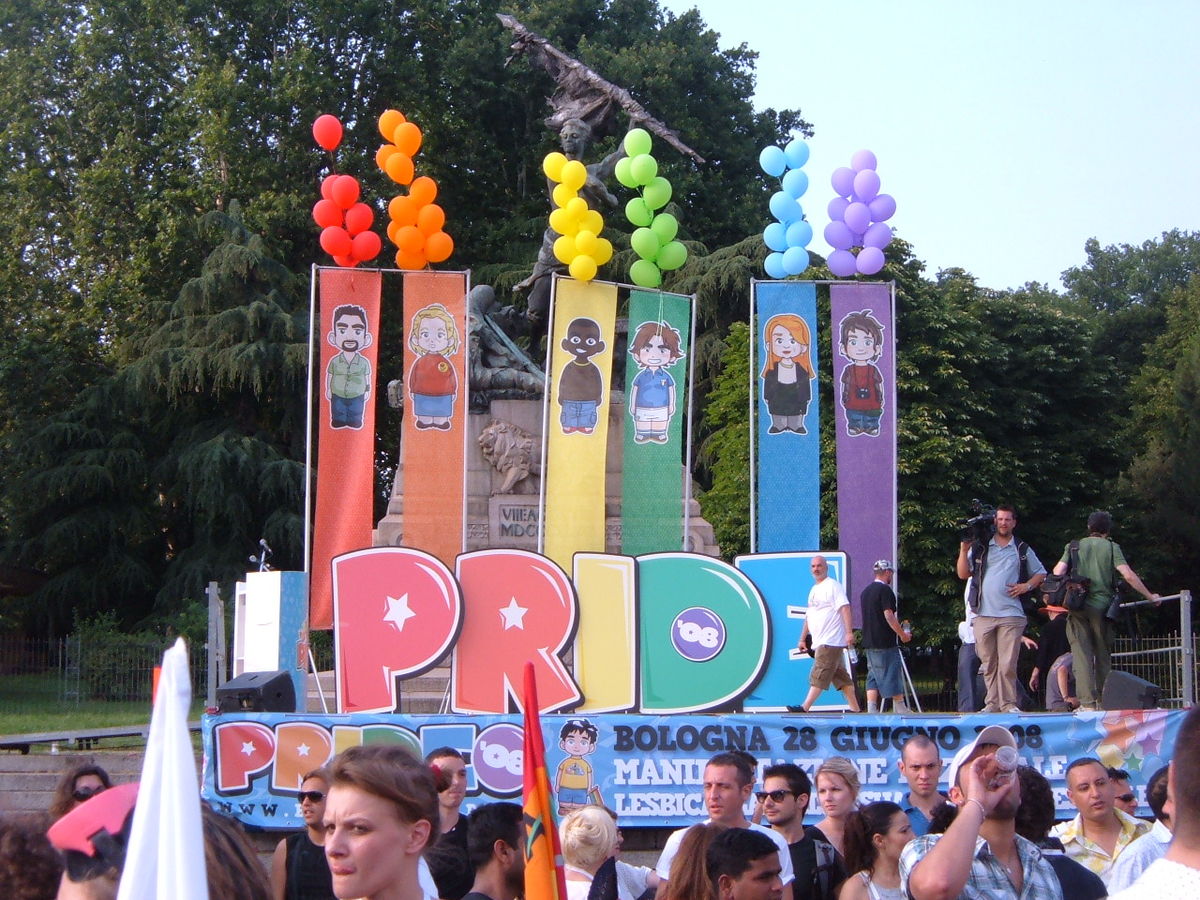Russia’s special historical operation

Starting in September, high school students in Russia will learn history from new textbooks. Or rather, they will learn a falsified, manipulated, emotionalized, anti-Western version of their own past. A complete novelty is the chapter on the “special operation.”
Maciej Pieczyński
Four new textbooks have been published for Russian history and general history for the 10th and 11th grades of high school (Russia’s elementary schools end with the 9th grade, and then students go to high school). They are in use starting in September. And it is really worth looking at what young Russians will learn about their country’s past. The authors of the Russian history textbook are former culture minister, now advisor to the Russian President, Vladimir Medinsky, and the rector of the MGIMO university, historian Anatoly Torkunov.
“Our ancestors, representatives of various peoples, were inspired by the ideals of social justice. Their enthusiasm, sacrifice and patriotism led the USSR to defend its independence and achieve the Great Victory over Nazi Germany and its allies in 1941–1945,” reads the introduction to the textbook for 11th-graders, covering the years 1914–1945. Admittedly, Russian students will learn about the bloody nature of the civil war and the cruelty of both the “Whites” and the Bolsheviks. They will read about Stalinist repression and even the great famine in Ukraine (which, however, is not described as a deliberate genocide, but the result of misguided government policies). The dominant message is nevertheless one of pride in the USSR.
In modern Russia the word “revolution” has mostly negative connotations, and praising the Soviet Union while completely negating the way it was created is no easy exercise. Therefore, as a compromise, Russian historians use the term “Great Russian Revolution” to include both the February Revolution (the overthrow of the tsar by liberals, democrats, and socialists) and the October Revolution (the overthrow of liberals, democrats, and socialists by the Bolsheviks). The authors of the new version of the Russian high school history textbook explain the significance of these events as follows: “The Revolution […] has had a tremendous impact both on the development of our country and on worldwide processes […]. However, the aftermath of the revolutionary events was also tragic: the destruction of the traditional social system, devastation, famine, death, and the emigration of millions of citizens. The most horrific was the fratricidal, merciless civil war. And since in Russian the word ‘great’ usually carries with it a positive evaluation, further in the textbook the abbreviation ‘Russian Revolution’ will be used.”
POLAND IS YOUR ENEMY
While in the case of the USSR’s domestic policy the textbooks’ authors are able to nuance and point out, however coyly and euphemistically, the communists’ “mistakes,” in describing foreign policy their message is essentially black and white. Poland is presented as one of the darkest characters. In 1920, it “invaded” Russia, despite the Bolsheviks’ having recognized the right of the Polish people to independence. Lenin did indeed repeal the Partition Treaties. However, when the Poles moved east to reclaim the territories of their former First Republic [the Polish-Lithuanian Commonwealth, which was partitioned by its neighbors in the late 18th century, ed.], they clashed with the Red Army, which, as we know, stopped only when it reached the Vistula River, which flows through Warsaw.
According to Medinsky and Torkunov, an agreement between Moscow and Warsaw was possible, but everything was spoiled by “Polish dictator Józef Piłsudski,” because he “laid claim to Malorossiya, Novorossiya [this is how the lands of left-bank and southern Ukraine were referred to in tsarist terminology, ed.], and Belarus.” So he struck at Kiev in alliance with the so-called Ukrainian People’s Republic. Officially, this was to help them build an independent state, although “the local (Ukrainian) population treated the Poles as occupiers.” The implication is clear: for Ukrainians, Poland is the aggressor and Russia (white or red, it doesn’t matter) is the liberator.
Further, the authors describe the course of hostilities very selectively, omitting many important facts. The Polish victory over the Red Army is reported in one sentence: “Pilsudski managed, with the support of Western countries, to inflict defeat on Tukhachevsky’s troops.” There is not a word about the Battle of Warsaw, but an entire paragraph is devoted to the tens of thousands of Red Army men who supposedly “died in Polish captivity as a result of barbaric treatment by the Polish command, including executions or persecution by the camp administration. The Polish authorities to this day refuse to recognize this war crime.”
A 10th-grader in Russia will learn that “the key event leading to the outbreak of the Second World War” was not the Molotov–Ribbentrop Pact, but the “Munich Conspiracy,” namely the partition of Czechoslovakia by Germany, approved by the Western powers. Poland, which occupied Trans-Olza on that occasion, is called “Hitler’s ally.” Of course, this is not the term Medinsky and Torkunov use to describe the Soviet Union. The Molotov–Ribbentrop Pact was a historical necessity, because it allowed the USSR to delay the German onslaught by two years. Under it, Moscow regained the territories lost as a result of the Polish–Bolshevik war. On September 17, 1939, the Red Army did not invade Poland, but rather “crossed its borders.” Russian students will read about neither the Soviet aggression nor the annexation of Polish lands by Moscow. Instead, they will learn that their annexation to the USSR was decided by the people of Western Ukraine and Western Belarus themselves.
And here is everything you can read about Soviet repression and crimes against Poles: “In the territory liberated by the Red Army, more than 250,000 Polish soldiers were made prisoners of war. Most were released to return home. However, many officers, gendarmes, policemen, and officials were transferred [sic] to prisons and camps. Documents published in the early 1990s indicate that some of them were executed by NKVD organs.” Next to this is a box explaining what the Katyn Memorial is: “A branch of the State Central Museum of Modern Russian History. It hosts mass graves of Soviet citizens (victims of political repression), a cemetery where Polish soldiers were buried, and a museum exhibit dedicated to the history of Polish–Russian relations and political repression.”
RUSSIAN SPACE
The textbook for 11th-grade students covers the period from 1945 to the present day. The chapters describing the period from the 1970s to the Putin era have been rewritten. The introduction, which dictates the overall narrative, states, among other things, that the USSR “opened the way to space for mankind, had great successes in the development of science, medicine and education,” but at some point, as a result of an economic and ideological crisis, the Soviet people yearned for change. Unfortunately, perestroika caused chaos and led to the collapse of the state, which only rose from ruins in the early 21st century, after Putin came to power. “The rebirth of our country, the strengthening of its role in the world triggered in our geopolitical rivals the desire to stop Russia’s development,” the authors write.
As is not hard to guess, Medinsky and Torkunov consider “the most important event of recent history” to be the “return of our historic lands to the Russian Federation” [referring to the annexation of Crimea in 2014 and four Ukrainian oblasts in 2022, ed.]. This introduction ends with a hyper-optimistic statement: “There is no doubt that the challenge thrown down by the West has made our country stronger and our multinational Russian nation even more united. Soon it will be your turn, as heirs to the glory of our fathers and grandfathers, to multiply the glory and power of our Fatherland.”
Completely new is the last chapter of the textbook for 11th-graders, dedicated to the “special military operation.” All the blame for the outbreak of war lies with the West. “Russia was assuming that the Cold War was a thing of the past. We believed that the future would be marked by the building of good-neighborly relations with the U.S. and the West,” it reads. The authors recall that after September 11, 2001, Moscow offered the Americans an alliance in the fight against terrorism. Economic cooperation was developing with Europe, which was buying gas and oil from Russia.
This, however, did not please the Americans, who were not going to tolerate competition. In the name of Corporate America’s interests, they unleashed wars in Iraq, Syria, and Libya. And in 2022 they blew up Nord Stream 2 (the authors give this version not as one of the possibilities, but as a fact) to cut Europeans off from Russian gas and force them to buy expensive American gas [sic]. The U.S. has torpedoed Moscow’s push for an “equal partnership.” NATO’s eastward expansion was part of this policy. Yet the alliance had been created as a weapon against “Soviet expansion,” so it lost its raison d’être in 1991. Western politicians promised that NATO enlargement would not happen, but they have not kept their word.
The West wants to bring about the breakup of Russia just as it brought about the breakup of Yugoslavia in the 1990s. To this end, it “has been sponsoring Russophobia” in the former Soviet republics for a long time. It plans to drag Russia into a series of conflicts and “color revolutions,” unravel its economy, and then replace the people in power in the Kremlin with its own appointees, “divide Russia into pieces,” and “take control of its raw materials.”
The first “anti-Russian torpedo” was Georgia. In 2008, pro-American President Saakashvili attacked Moscow-friendly South Ossetia as well as the Russian peacekeepers who were stationed there. A counteroffensive was launched. The Russian army stood at the gates of Tbilisi, and “only Russia’s exceptionally peaceful attitude allowed Georgia to preserve its independence” [sic]. Besides, the West, to spite Russia, is “falsifying history” by “lying” about Stalin’s alliance with Hitler and tearing down monuments to the “liberating” Red Army in Poland. “Ukrainian neo-Nazis” became another “battering ram of the U.S. against Russia” when they seized power in Kiev as a result of a bloody coup.
Not a word about the grassroots protests at the Euromaidan. Instead, students will find information about grassroots pro-Russian protests in Crimea, where “order and security” were eventually provided by Russian soldiers. The peninsula “returned to the motherland” as a result of a “referendum” (which was fair and honest, obviously). A “popular uprising” against the “Kiev junta” broke out in the Donbas. A bloody war began, to which the Russians sent only “volunteers,” answering the calling of their hearts for their Slavic brethren oppressed by neo-Nazis.
PUTIN IS SAVING THE WORLD
The “junta” was continuously shelling civilians in the Donbas. In late 2021, Russia proposed an agreement, but the West rejected it. Russian students will not read about what made it an unacceptable ultimatum. Instead, they will learn that “NATO advisors” stationed on the Dnieper “pressured Kiev to launch an invasion of Donbas.” “American biological weapons laboratories” were being established in Ukraine. Kiev publicly expressed its desire to have nuclear weapons, regain Crimea, and join NATO. Moscow could not allow this to happen, because a Russia–NATO war would be “the end of civilization.”
It is telling that the textbook is silent about the fact that the official goal of the “special military operation” was the denazification and demilitarization of Ukraine. Probably because today, conquering that country does not look realistic. Instead, students learn that the “special operation” was launched to defend the Donbas and Russia. In fact, it is at war with the West, which “showered the Ukrainian regime with money and weapons” and imposed sanctions “in violation of international law.”
However, Russia has quickly adapted to the new conditions, and its economy is booming. The departure of Western capital from the country even creates… an opportunity for the development of domestic business. The authors urge readers to take advantage of this “historic opportunity” after graduation and start their own businesses. Russia is opening up to non-Western markets. Meanwhile, European countries, deprived of cheap Russian raw materials, are struggling with a crisis. The Americans make the most money from the war, fighting Russia “to the last Ukrainian.” As for the Ukrainians themselves, they are struggling with dictatorship in their own country (and obviously not with Russian aggression), and the opposition is being brutally persecuted in Ukraine.
The West is relentlessly pursuing victory on the battlefield, rejecting all peace proposals. A victory that would mean the downfall of Russia, which in this situation has no choice but to fight. In an interesting twist, the authors explain the origins of civilian casualties in Ukraine. They explain that the Russian army has a categorical ban on shelling civilian facilities, but that the criminal Ukrainian army hides in apartment blocks, taking cover behind “human shields.” “Such bestial tactics on one’s own territory had not yet been used by any army in the world!” – write the authors with outrage. Medinsky and Torkunov realize that their teenage audiences can easily find antidotes to Kremlin propaganda on the Internet. So they “warn” them against the fake news produced in the West (“slandering” Russia), against manipulation and “staged” news (a reference, among other things, to the Bucha killings of civilians, which in Russia is considered an “anti-Russian fabrication”). The last chapter of the new textbook for Russia’s high school students has a gallery of “heroes of the special military operation” spread over several pages.
This article was published in Polish in the Do Rzeczy weekly in August 2023.



